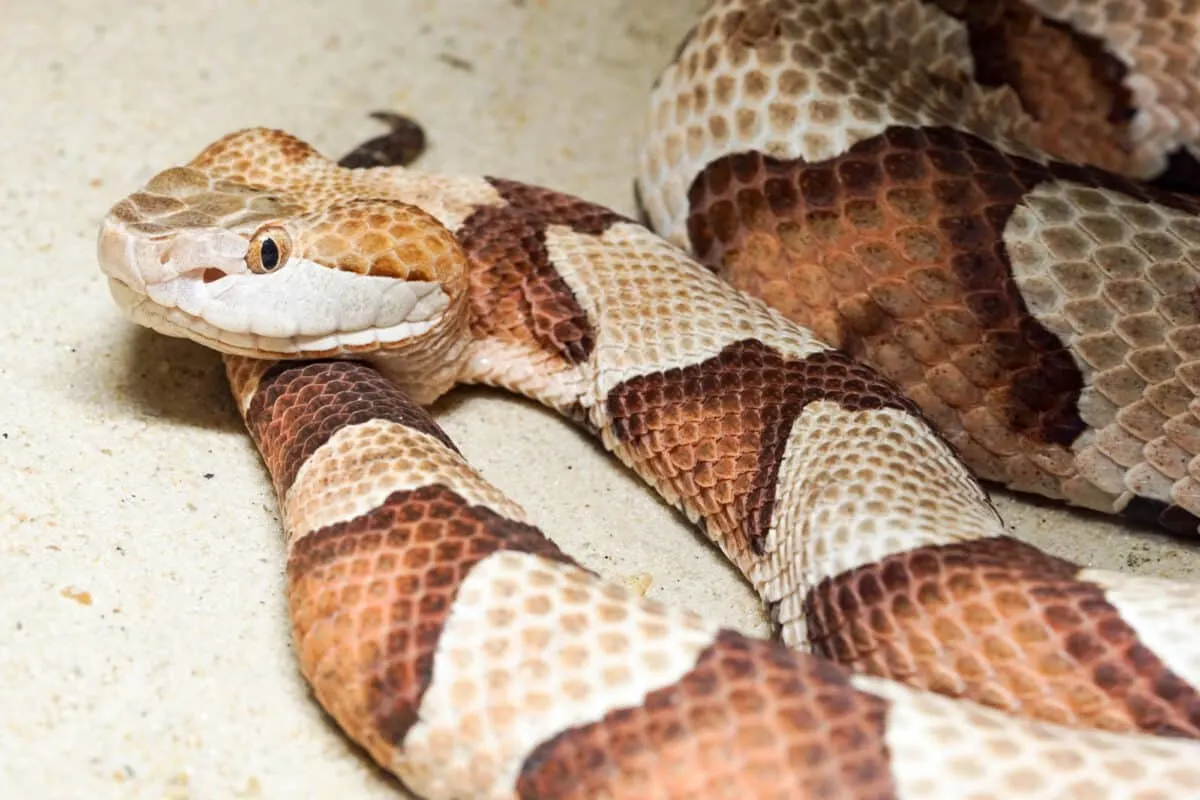Let’s explore the intriguing world of the Northern Copperhead, a venomous snake native to the eastern United States. This remarkable creature holds a special place in the hearts of snake lovers, as it evokes both awe and concern. Its stunning appearance has captivated many, while its deadly nature instills a sense of fear.
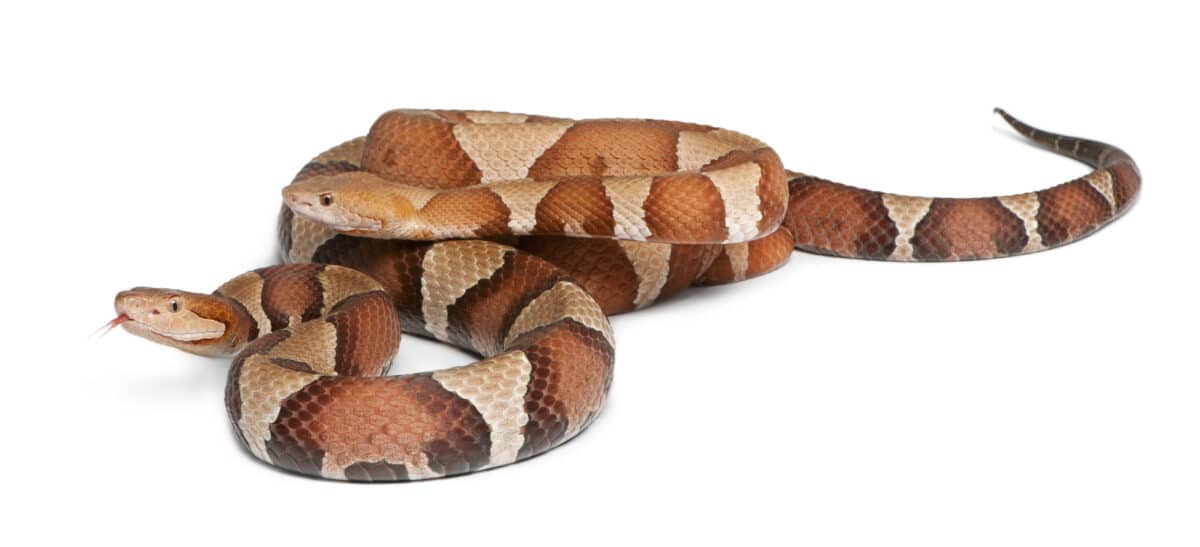
In this blog article, we’ll explore everything there is to know about the Northern Copperhead bite. From its unique traits and preferred habitat to its intriguing behavior, we’ll delve into what makes this snake so fascinating. But, of course, we can’t ignore the serious side of things—the effects of its venom on both humans and other animals will be a key focus too. So, grab a cup of coffee, settle in, and let’s uncover the secrets of this extraordinary serpent together!
Slither ahead to any section below!
Key Points
| Section | Key Points |
|---|---|
| A Closer Look at the Northern Copperhead | – Unique appearance with reddish-brown or coppery tint and hourglass-shaped crossbands. |
| – Habitat includes various settings in the eastern United States, from swamps to wooded areas. | |
| – Behavior varies with the season; they are more active in warmer months and seek refuge in winter. | |
| – Crucial role in the environment as both predators and prey, contributing to ecological balance. | |
| Humans-Are They Bitten? | – While venomous, Northern Copperheads rarely attack people. Most bites happen when accidentally disturbed. |
| – Understanding their habitat and behavior can promote peaceful coexistence. | |
| The Northern Copperheads Venomous Bite | – Venom contains a complex mixture of proteins, enzymes, and toxins used for defense and hunting. |
| – The venom immobilizes prey and disrupts the victim’s neurological system, causing paralysis and death. | |
| – Defensive behavior can be triggered if threatened or provoked. | |
| Effects of a Northern Copperhead Bite | – Symptoms range from mild localized effects (pain, swelling) to more severe systemic reactions (nausea, weakness). |
| – Quick medical attention is critical, and following first-aid steps can help reduce the spread of venom. | |
| – Antivenom administration and supportive care may be necessary in severe cases. | |
| – Recovery can be challenging, and some victims may require ongoing medical treatment and observation. | |
| Coexistence and Prevention | – Educating and raising awareness about the Northern Copperhead is essential to reduce human-snake interactions. |
| – Habitat management, waste disposal, and snake-awareness campaigns can promote respectful coexistence. | |
| – Providing accessible resources on snake safety and bite prevention can save lives and alleviate fear. | |
| The Bottom Line | – Learning about the behavior, venom, and place of Northern Copperheads in the ecosystem fosters respect for these creatures. |
| – Responsible coexistence and preventative actions are crucial for safety. |
A Closer Look at the Northern Copperhead
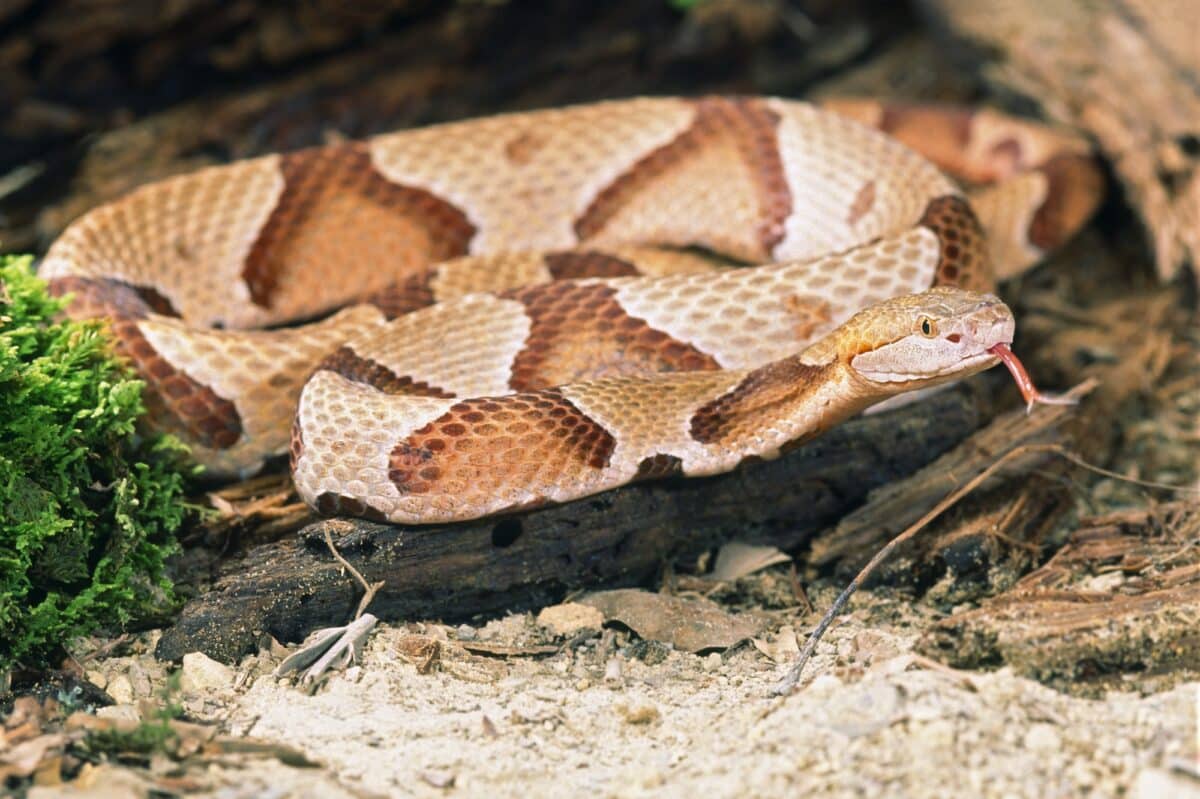
Appearance
Due to its unusual look and range, the Northern Copperhead merits further investigation. Its distinctive reddish-brown or coppery tint, emphasized by hourglass-shaped crossbands of various colors and intensities, is where its name originates. In its natural environment, this eye-catching pattern helps the animal survive as an ambush predator by acting as an excellent disguise.
Habitat
The Northern Copperhead has a wide geographic range and lives in various settings throughout the eastern parts of the United States. These adaptable snakes may live anywhere, from swampy places to rocky hillsides and wooded areas. Understanding their distribution aids in locating potential hotspots for encounters between humans and snakes and sheds light on the ecological balance in these locations.
Behavior
Investigating the Northern Copperhead’s behavior teaches us important lessons on safely coexisting with these dangerous snakes. They exhibit diverse behavior according to the season. They are more likely to be seen during the warmer months when they are more active, while during the winter months when they are less active and seek refuge to conserve energy.
Role in Environment
Northern Copperheads are crucial to the environment because they are predators and prey. They mostly consume small mammals, birds, and amphibians, aiding in the control of these animals’ numbers. They, in turn, provide food for larger predators like raptors and other carnivorous mammals.
Humans-Are They Bitten?
Despite being venoumous, these snakes usually do not attack people. Most bites happen when people accidentally tread on or disturb an animal. The chance of encounters can be reduced, and peaceful coexistence can be promoted by understanding their habitats and behavior.
The Northern Copperheads venoumous Bite

The Northern Copperhead’s venomous bite is a topic of curiosity and concern since it is essential to the snake’s defense and hunting strategies. Venom is a complex mixture of proteins, enzymes, and toxins to immobilize its victim and aid in digesting.
Check out: How Can You Avoid Getting Bitten By A Yellow Sac Spider.
Venom Composition
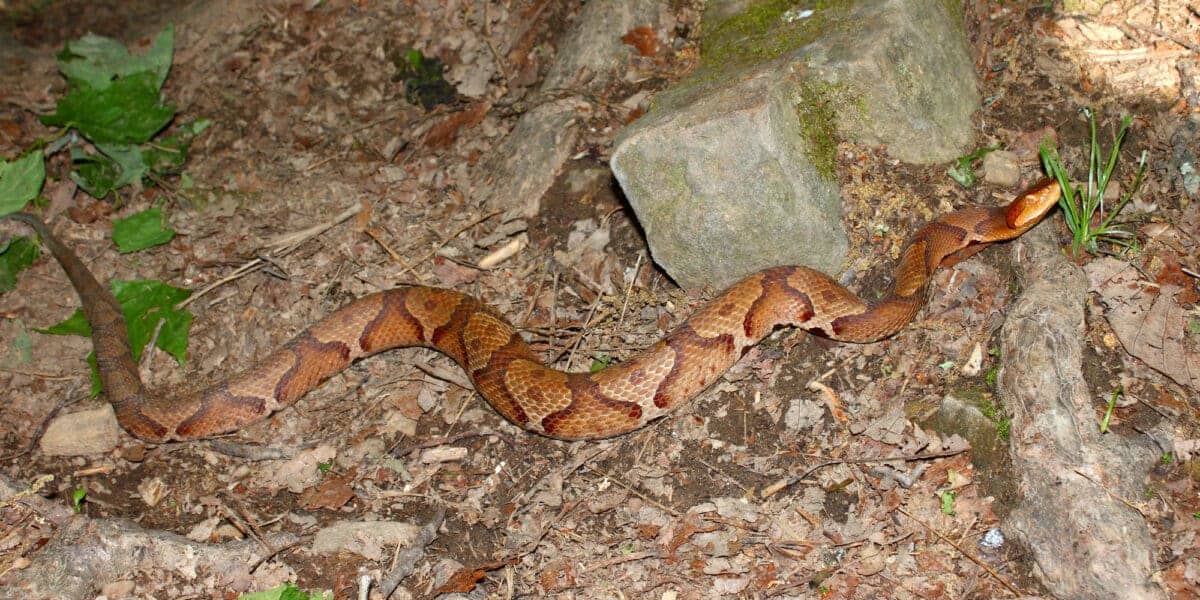
A wonder of evolution is the Northern Copperhead’s venom’s chemical makeup. The snake’s fangs deliver the venom when it bites its prey, instantly rendering the victim unconscious. A combination of enzymes in the venom breaks down tissues, facilitating the snake’s easier consumption of its victim.
The venom also contains poisons that disrupt the victim’s neurological system, causing paralysis and death. The Northern Copperhead’s highly effective venom guarantees a successful and quick capture of its prey.
Check out: What To Do After A Red-Bellied Black Snake Bite.
When Do They Bite?
Although the Northern Copperhead does not typically attack people, it may do so if threatened or provoked. When confronted, the snake assumes a defensive stance, coiling its body and getting ready to attack if required. Making rapid movements, treading on the snake unintentionally, approaching it too closely, or handling it improperly can all set off defensive behavior.
Defense Strategies
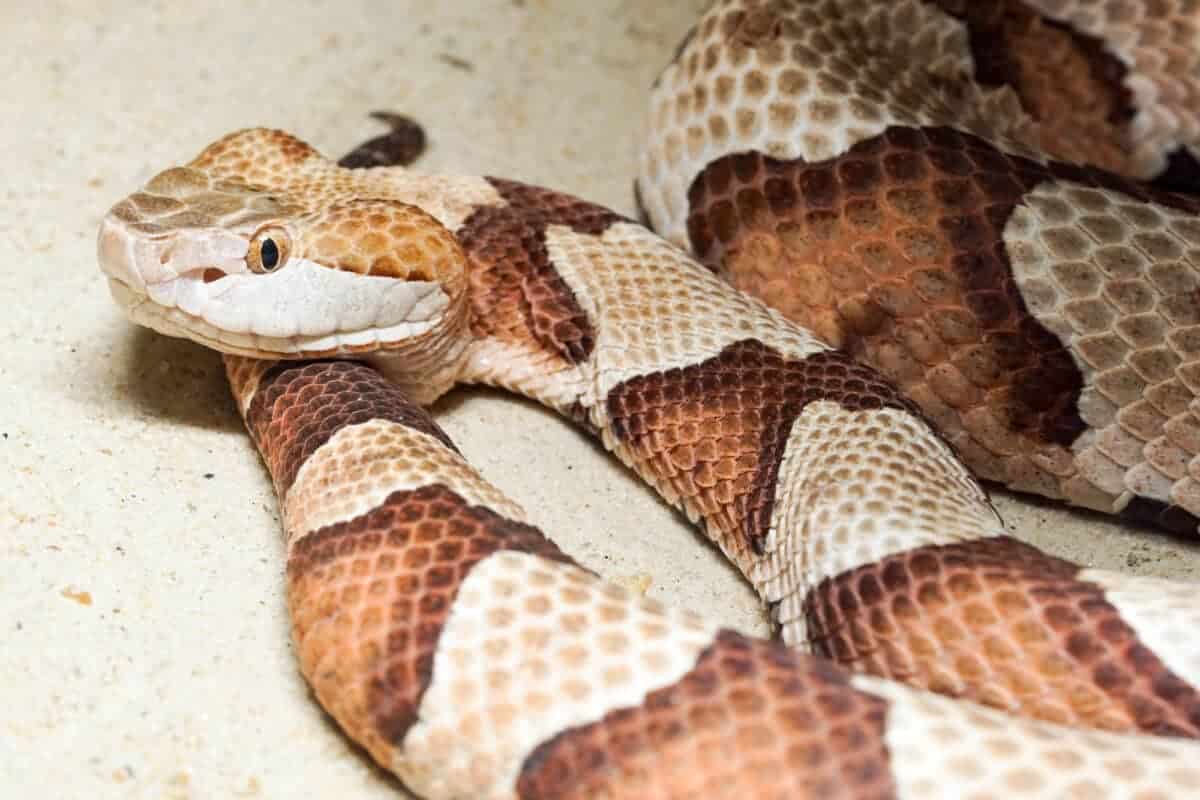
Understanding the Northern Copperhead’s defense strategies is crucial for preventing potential confrontations and lowering the chance of getting bitten. Taking measures is essential when exploring regions where the snake may be found, such as wooded areas or rocky hillsides.
Stay on approved walkways, wear strong shoes to prevent accidental bites, and avoid reaching into places where a hidden snake may exist. When encountering a Copperhead, it is important to move cautiously away from it and give it room to turn around
Check out: Mighty Komodo Dragon Bite.
Effects of a Northern Copperhead Bite
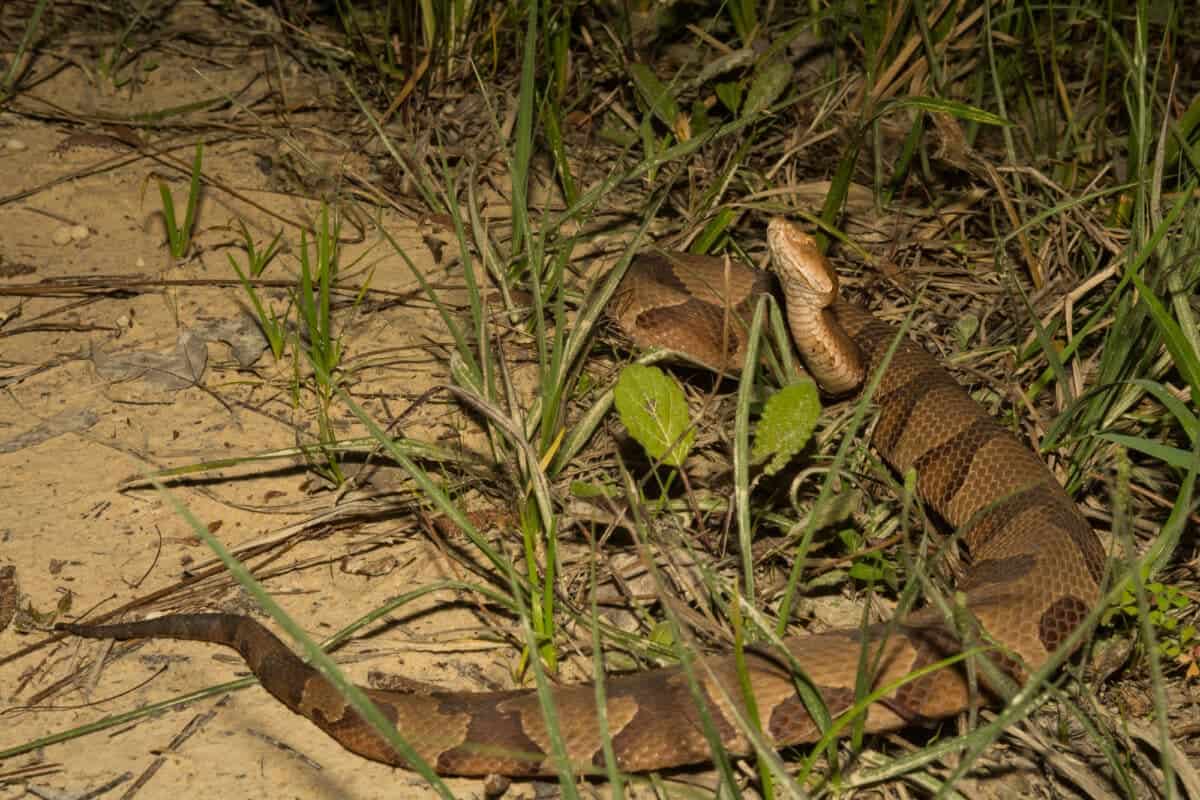
The venom of a Northern Copperhead contains a complex blend of proteins and poisons used to paralyze prey; therefore, being bitten by one can have substantial effects on its victims. The amount of venom injected, the site of the bite, the person’s general health, and their age can all affect how severe the symptoms of the bite will be.
Symptoms
Bite victims may have mild localized symptoms, including pain, swelling, and bruising to more serious systemic reactions. The enzymes in the venom can destroy tissue and produce significant swelling, which can be worrisome if the bite happens on a limb or other delicate parts of the body. In cases of envenomation with a higher venom load, systemic consequences may also include nausea, vomiting, weakness, and breathing difficulties.
Medical Care
Prompt medical care is critical in the event of a Northern Copperhead bite. Seeking quick medical attention can considerably improve the prognosis of the victim. Before seeking medical attention, it is crucial to follow important first-aid steps to reduce the spread of the venom and its complications. Keeping the injured limb immobile and at or just below heart level can accomplish slowing the circulation of the venom. However, it’s crucial to avoid using a tourniquet or trying to suck out the venom because doing so could worsen the condition.
Once inside a hospital, medical staff members could give antivenom to lessen the effects of the venom. When to provide antivenom is critical since it can lessen the intensity of symptoms and stop the venom from doing more harm. In severe cases, healthcare providers may administer supportive care, such as pain management and breathing aid.
Recovery
It might be difficult to recover from a Northern Copperhead bite, especially if the envenomation was severe. Certain victims might need ongoing medical treatment and observation to guarantee a complete and secure recovery. It is essential to have subsequent medical exams to evaluate any potential long-term consequences and manage any potential issues.
Coexistence and Prevention
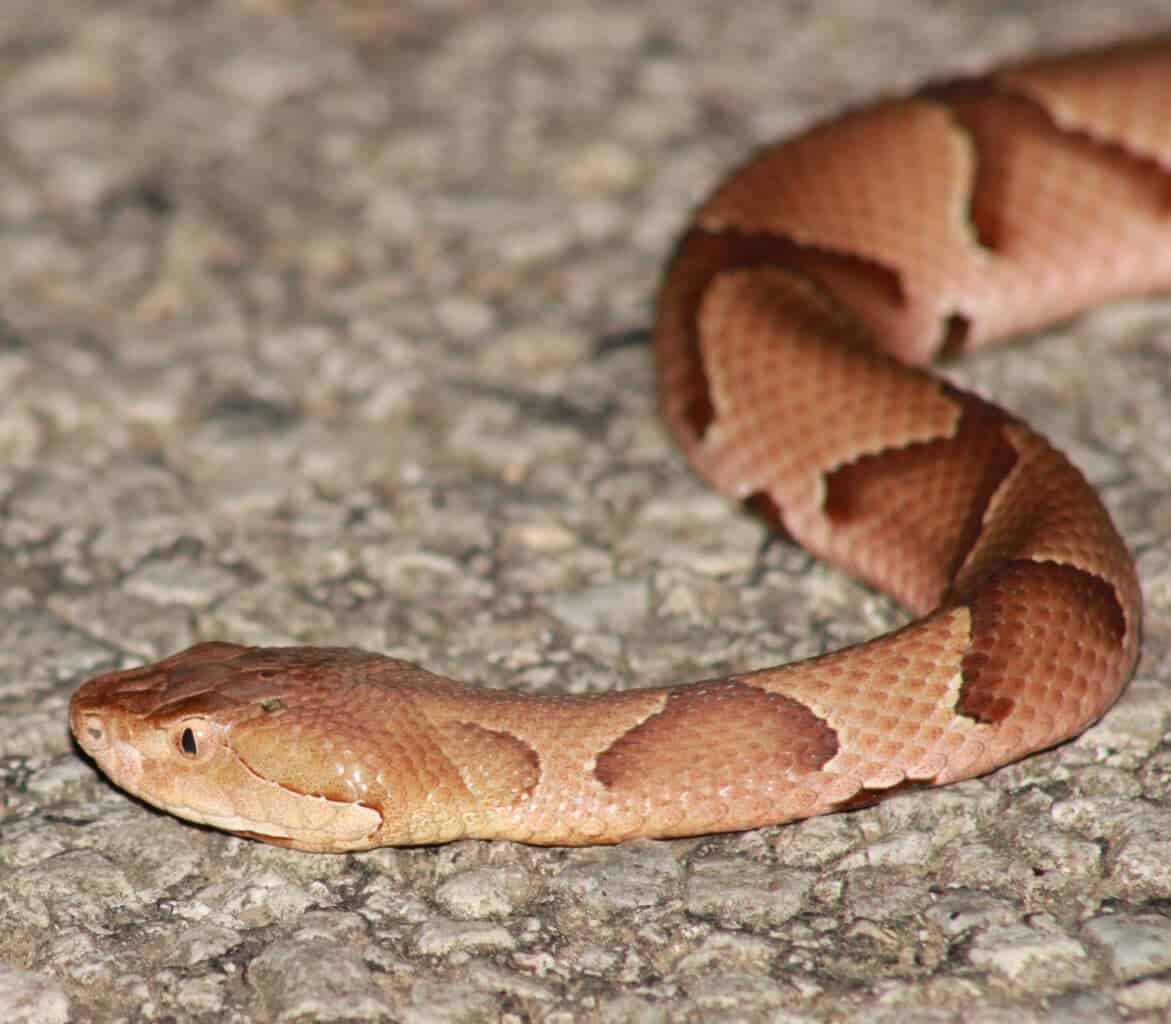
The Northern Copperhead is a venoumous snake; thus, living beside it requires education and awareness to reduce the possibility of interactions between people and snakes. For the protection of people and the well-being of the snakes, it is imperative to implement effective steps to reduce these clashes.
Habitat Management
Habitat management is one method for decreasing human-snake confrontations. Keeping yards and outdoor places well-maintained can deter snakes from seeking shelter in those areas. Clearing away trash, long grass, and wood piles can prevent the Northern Copperhead and other snakes from hiding in certain areas. Additionally, holes in fences and buildings can be closed to keep snakes out of areas where people are present.
Disposal of Waste
The proper disposal of waste is yet another crucial component of coexistence. Eliminating potential food sources, such as rodents attracted to trash and garbage, can keep snakes out of human-populated places. Encouraging ethical waste management methods within communities can greatly lessen the possibility of luring snakes into residential areas.
Awareness
To advance safety and understanding, we must make communities snake-aware. It can be extremely helpful to inform locals about the presence of Northern Copperheads in the area. Furthermore, the right steps to take if they come across a snake. Additionally, making wise choices when faced with snakes requires teaching people how to recognize dangerous snakes. Lastly, to tell them apart from innocuous kinds.
Campaigns
Campaigns for greater public knowledge of dangerous snakes and educational initiatives are essential for encouraging respectful coexistence. These endeavors allow for dispelling misconceptions about the Northern Copperhead and other dangerous animals. Highlighting the significance of snakes in ecology can lead to a greater understanding and acceptance of these fascinating creatures within communities. Furthermore, they function as pest predators.
Resources
For people to react appropriately during encounters, accessible resources on snake safety and bite prevention are essential. Arming locals with information on how to avoid snake encounters and what to do in the event of a bite can save lives and prevent unneeded fear.
The Bottom Line
The Northern Copperhead bite is a stark reminder of the precarious equilibrium between people and animals. We may encourage respect for this snake’s inherent worth in the natural world by learning more about its behavior, venom, and place in the ecosystem.
Safety for people and Northern Copperheads depends on responsible coexistence and preventative actions. We can maintain our awe at the beauty of these creatures while minimizing potential threats. Additionally, encouraging harmony in our shared world via education, awareness, and respect for their natural habitats!
Thanks for reading along! Check out our related article links below.
Next up:
- Washington’s Western Rattlesnake
- Discover San Francisco’s Most Dangerous Animals
- Unearth the Reality of Florida’s Venomous Spiders
- Great White Shark Vs. Bull Shark
- Michael Phelps Vs. Dolphin: A Race For Aquatic Supremacy
- Eagle’s Aerial Acrobatics: The Hawk Becomes The Hunted
Frequently Asked Questions (FAQs)
Being bitten by a copperhead can lead to various symptoms depending on the amount of venom injected, the bite location, and the victim’s general health. Symptoms can range from mild localized effects like pain, swelling, and bruising to more severe systemic reactions such as nausea, weakness, and breathing difficulties. Seeking prompt medical attention is crucial to manage the effects of the bite effectively.
Another name for a copperhead snake is the “highland moccasin” (Agkistrodon contortrix).
Copperhead snakes have a variety of predators in their natural habitat. Some common predators include birds of prey such as hawks and owls, larger snakes like kingsnakes, and certain mammalian predators like raccoons and foxes.
Dogs can survive a copperhead bite, but it depends on factors like the size of the dog, the amount of venom injected, and the location of the bite. If a dog is bitten by a copperhead, it is essential to seek immediate veterinary attention. With proper medical care and treatment, many dogs recover successfully from copperhead bites.
Join our Forum for free today!

- Huge Pet Bison Breaks Into House - July 22, 2024
- Giant Black Bear Surprises Beachgoers by Emerging from the Ocean in Florida - July 22, 2024
- Brave Man Plays Instrument While Huge Bear Caresses His Shoulder - July 22, 2024

